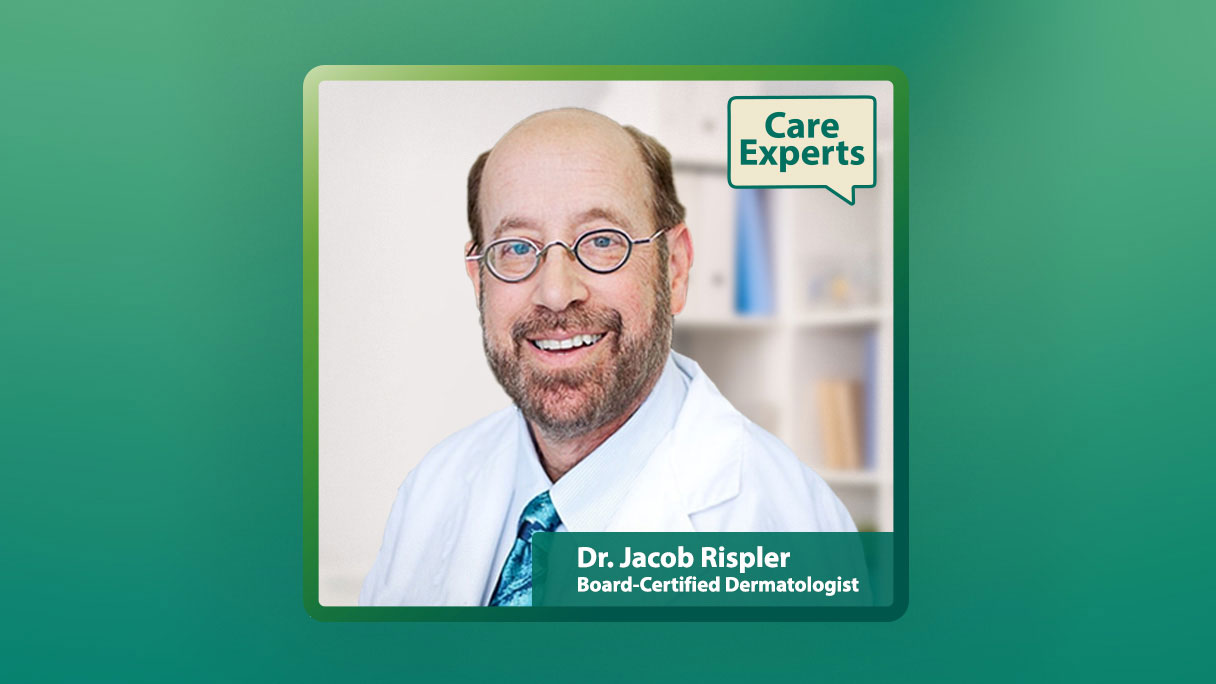Age, sun exposure and medical issues can wreak havoc on your skin. But here's the good news: Advances in laser therapy treatments may help reduce some premature signs of aging, such as the appearance of facial lines, wrinkles, blemishes and scars. And that's not all. Laser therapy is a popular non-invasive cosmetic treatment that can help with a host of other issues too, like tattoo removal and acne scar treatment.1
When it comes to laser therapy, there's much to delve into to fully understand how this cosmetic technology works. This guide includes an overview of different laser therapy procedures, how much they cost, who is a good candidate for one and how it all works. Your dermatologist can help you decide which of these is the best choice for your skin.
What Is Laser Therapy?
Laser therapy is a non-invasive treatment that uses lasers to generate heat in your skin, stimulating the growth of collagen and helping to regenerate damaged skin. The exact treatments may vary in terms of how deeply they penetrate the skin.2
Today, laser therapy can be done on almost any part of the body. It can be used to treat wrinkles, acne scars, tattoo removal, sun-damaged skin and more.1
Types of Laser Therapy
There are various types of laser therapy available, each suited for different treatments. Here are some of the main categories:
-
Ablative resurfacing lasers. Ablative laser therapy removes a portion of your surface skin to stimulate deeper healing. The treatment produces a faster result with more downtime because it's more invasive.3
The therapy treats conditions like deep wrinkles, more prominent scarring and severe sun damage. Examples include Fraxel® and Sciton ProFractional®.4
-
Non-ablative resurfacing lasers. Non-ablative laser therapy heats only the collagen beneath your skin and doesn't damage your skin's surface. Examples of these lasers include PicoSure®, 1540nm and Clear + Brilliant®.3
They're used for smoothing the skin, improving sun damage and treating minor scars and melasma.4
-
Pigment-pulverizing lasers. These lasers are often used for treatments like tattoo removal and hyperpigmentation. The most common types are Q-switched lasers and picosecond lasers. Q-switched lasers can switch between different wavelengths, making them safer for most skin tones.4
-
Anti-redness lasers. Also known as vascular lasers, these work by heating blood vessels and targeting hemoglobin, destroying target blood vessels without affecting surrounding tissue. They're used to treat skin conditions with associated redness, such as sun damage, spider veins, rosacea redness, port wine stains, red moles and fresh stretch marks.4
-
Intense pulsed light (IPL). IPL isn't technically a laser, but it's so similar to laser therapy that it's often grouped in the same category. It uses high-intensity visible light pulses to destroy problem cells, such as broken capillaries.4
It also stimulates collagen production to encourage healing. IPL can be used anywhere on the body. The treatment reverses sun damage, removes dark spots, helps reduce signs of aging, reduces redness from conditions like rosacea or broken blood vessels, diminishes melasma and more.5
How Much Does Laser Therapy Cost?
The national average cost* of laser therapy treatment can range between $995 to $4,800 depending on the type of treatment, the area of the body, the condition being treated and your geographic location. The average costs* below do not include facility costs, anesthesia (if needed) or prescriptions.6
| Type of laser treatment | Average cost | Cost range |
|---|---|---|
| Ablative laser skin resurfacing | $2,809 | $1,994 to $4,800 |
| Non-ablative laser skin resurfacing | $1,815 | $995 to $3,678 |
The table below breaks down average costs* for ablative and non-ablative laser resurfacing by state/district, highlighting just how much variation you can find depending on where the treatment is done. Like those above, these prices do not include facility costs, anesthesia (if needed) or prescriptions.6
| State/District | Average cost for ablative laser skin resurfacing | Average cost for non-ablative laser skin resurfacing |
|---|---|---|
| Alabama | $2,722 | $2,048 |
| Alaska | $2,884 | $1,849 |
| Arizona | $2,901 | $1,828 |
| Arkansas | $2,822 | $1,781 |
| California | $2,713 | $1,740 |
| Colorado | $2,893 | $1,472 |
| Connecticut | $2,745 | $1,815 |
| Delaware | $2,842 | $1,679 |
| District of Columbia | $2,836 | $1,796 |
| Florida | $2,918 | $1,943 |
| Georgia | $2,835 | $1,721 |
| Hawaii | $2,911 | $1,635 |
| Idaho | $2,683 | $1,893 |
| Illinois | $3,161 | $1,608 |
| Indiana | $2,823 | $2,028 |
| Iowa | $2,672 | $1,886 |
| Kansas | $2,755 | $1,817 |
| Kentucky | $2,440 | $1,990 |
| Louisiana | $2,906 | $1,895 |
| Maine | $2,732 | $2,221 |
| Maryland | $2,814 | $1,565 |
| Massachusetts | $2,788 | $2,273 |
| Michigan | $2,829 | $1,594 |
| Minnesota | $2,854 | $1,669 |
| Mississippi | $2,808 | $1,858 |
| Missouri | $2,804 | $1,899 |
| Montana | $2,888 | $1,837 |
| Nebraska | $2,840 | $1,737 |
| Nevada | $2,502 | $1,829 |
| New Hampshire | $2,718 | $1,603 |
| New Jersey | $2,871 | $1,801 |
| New Mexico | $2,869 | $1,507 |
| New York | $2,968 | $1,799 |
| North Carolina | $2,729 | $2,191 |
| North Dakota | $2,739 | $1,907 |
| Ohio | $3,045 | $2,041 |
| Oklahoma | $2,560 | $1,723 |
| Oregon | $2,898 | $1,868 |
| Pennsylvania | $2,579 | $1,775 |
| Rhode Island | $2,884 | $2,087 |
| South Carolina | $2,758 | $1,657 |
| South Dakota | $2,860 | $1,650 |
| Tennessee | $2,898 | $1,889 |
| Texas | $2,966 | $1,812 |
| Utah | $2,703 | $1,984 |
| Vermont | $2,710 | $1,611 |
| Virginia | $2,827 | $1,560 |
| Washington | $2,912 | $1,827 |
| West Virginia | $2,661 | $1,795 |
| Wisconsin | $2,851 | $1,681 |
| Wyoming | $2,604 | $1,793 |
Does Insurance Cover Laser Therapy?
Your health insurance plan is not likely to cover laser therapy, as most insurance providers do not consider it a medically necessary treatment. Health plans don't typically cover cosmetic treatments, so you will likely be responsible for the full price.7
You'll want to have another method of payment lined up, such as financing with the CareCredit credit card.
Who Is a Good Candidate for Laser Therapy?
If you're considering laser therapy, you may be a better candidate if you:8
-
Maintain a healthy weight before skin tightening procedures
-
Quit smoking
-
Minimize alcohol intake
-
Are willing to protect your skin from the sun and tanning
-
Aren't pregnant
-
Don't have a skin infection
If you have darker skin, consult with your dermatologist, as some types of laser treatments are more likely to cause burns or hyperpigmentation on people with darker skin.1 However, some types of therapy, like the Q-switched laser, are safe for most skin tones because they can operate on different wavelengths.4
What Happens During and After Laser Therapy?
Laser therapy varies depending on what type you're having done and the exact type of laser being used. In general, however, you can expect the preparation, procedure and recovery to look like this:
Preparation
To prepare for laser therapy, first consult with your doctor to make sure the therapy is right for your skin type and the issues you want to address. Then:1
-
Protect your skin from the sun with SPF 30 (or higher) or sun-protective clothing. For Clear + Brilliant, for example, you'll want to do this for one to two weeks before the procedure.9 For tattoo removal, you'll need to do this for two weeks.10
-
Avoid aesthetic treatments that can irritate your skin.10
-
Shave a couple of days before your treatment, especially for non-ablative treatments like Clear + Brilliant.9
-
Stop certain medications, such as topical retinoids, based on your doctor's recommendation.
-
Stop smoking.
-
Start an antiviral or antibiotic medication if your doctor recommends it.
Procedure
The exact procedure will vary depending on the type of laser therapy you get. Here are some examples:
-
Non-ablative laser therapy. Clear + Brilliant, for example, can take as little as 15 minutes.9 You may feel mild discomfort in areas like the neck, but it won't be extreme.9 You'll likely be given a topical anesthetic, but pain is minimal.2 You can camouflage any redness with makeup.2
-
Ablative laser therapy. This takes between 30 minutes and two hours depending on the treatment needed.11 A laser is used to remove the outer layer of your skin and heat the underlying dermis so that collagen is stimulated.12 Because this procedure can be painful, your doctor may give you a local anesthetic to numb the area.11 Once finished, you'll be given a special dressing to protect the treated areas and instructions on topicals or dressings that can help with healing.11
Recovery
Laser therapy typically has a short recovery period, but this can vary depending on the type of procedure you're having done. Here are some examples:
-
Non-ablative laser therapy. You may look a little sunburned after your treatment for the first day or so.9 Recovery time is minimal, though it may take a few months for the results to fully take effect.2 You can return to work immediately, but you should keep the treatment area moisturized, use cold compresses for pain and avoid sleeping on the area to reduce swelling.2 Apply SPF 30 daily.2
-
Ablative laser therapy. This requires a longer recovery time. You may need to stay home for five to seven days afterward, but you'll notice tightening and fewer wrinkles within just two weeks.8 Note that your treated skin will peel, and your new skin will be pink.13 The pinkness will lighten over the next two to three months but may take up to a year to fully fade.13
-
Pigment-pulverizing laser therapy. Expect blistering or crusting for the first day or two. You'll need to keep the area clean and dry while it's healing and apply the recommended ointments a few times a day. After about three days, you can remove your bandage. Scabbing should heal in one to two weeks.14
Potential Side Effects of Laser Therapy
The possible side effects can vary depending on the type of laser therapy you choose. Most commonly, you might experience:13
-
Acne flare-ups
-
Infection (you may be given an antibiotic to use before or after treatment)
-
Milia (small white bumps)
-
Redness, which may take longer to diminish in some patients
-
Mild swelling or bruising
-
Cold sore reactivation (you may be given an antiviral if you've had cold sores in the past)
-
Darker marks, especially if you have darker skin (patients with darker skin may need a slower approach, with lighter treatments over time)3
-
Scarring, especially with laser resurfacing
Laser therapy can be an ideal choice for people who want a non-invasive treatment for cosmetic issues like premature aging and hair or tattoo removal. Whether you need ablative or non-ablative treatment will depend on your particular goals. Your doctor can help you determine what choice is best for you.
Financing Laser Therapy With the CareCredit Credit Card
When getting laser therapy or another cosmetic procedure, the CareCredit credit card can help you pay for costs not covered by insurance.** Use our Acceptance Locator to find a doctor or cosmetic specialist near you that accepts CareCredit. Continue your wellness journey by downloading the CareCredit Mobile App to manage your CareCredit account, find a provider on the go and easily access the Well U blog for more great articles, podcasts and videos.
In addition to cosmetic procedures, you can also use your CareCredit credit card for dentistry, pet care, vision, hearing, health systems, dermatology, pharmacy purchases, spa treatments and so much more within the CareCredit network. How will you invest in your health and wellness next?
Author Bio
Stephanie Dwilson specializes in science journalism, breaking news and animal health. She's a business owner, attorney and writer.







